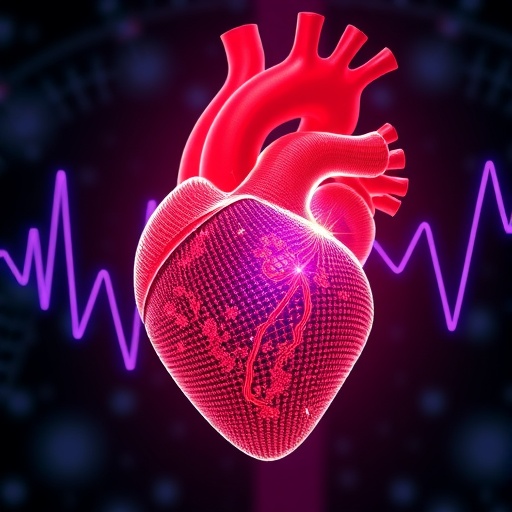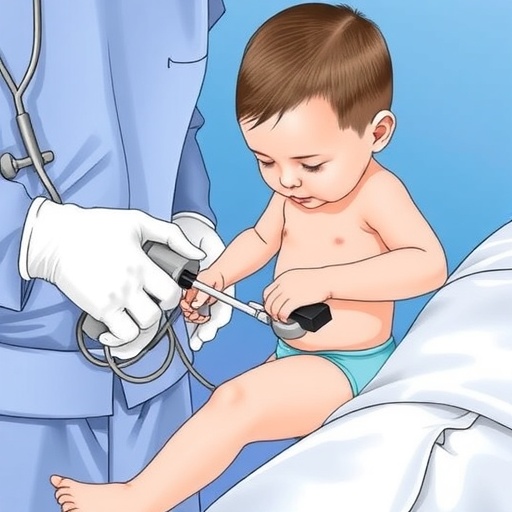
Recent groundbreaking research published in Nature Communications has unveiled a critical molecular mechanism by which certain anticancer therapies inflict damage on the heart, opening new frontiers in the ongoing battle against chemotherapy-induced cardiotoxicity. The study, led by Tejay et al., focuses on the intersection of tumour biology and cardiac cellular health through the lens of purinergic signalling pathways. Their work reveals how tumour-initiated signalling cascades promote the degradation of a key cardiomyocyte regulator, RBFOX1, ultimately exacerbating heart damage during DNA-damaging anticancer treatments.
Cardiotoxicity remains one of the most concerning side effects of many chemotherapeutic agents, particularly those that damage DNA to halt tumour growth. Despite extensive clinical awareness, the intricate molecular crosstalk that impairs cardiomyocyte integrity under these therapies has been insufficiently understood. This lack of clarity has hampered efforts to develop effective cardioprotective interventions without compromising anticancer efficacy. The present study leverages sophisticated experimental systems to illuminate the role of tumour-derived purinergic signals in driving cardiomyocyte dysfunction.
Purinergic signalling, mediated by extracellular nucleotides like ATP and their receptors, plays a multifaceted role in cellular communication across various tissues. While best known for its neural and immune functions, this pathway has emerged as a potent modulator of cardiac physiology under stress conditions. Tejay and colleagues demonstrate that signals originating from a tumour microenvironment hijack this system, increasing the extracellular nucleotide milieu that activates purinergic receptors on cardiomyocytes, thus triggering downstream molecular events detrimental to heart muscle cells.
.adsslot_q3KIoalUQE{width:728px !important;height:90px !important;}
@media(max-width:1199px){ .adsslot_q3KIoalUQE{width:468px !important;height:60px !important;}
}
@media(max-width:767px){ .adsslot_q3KIoalUQE{width:320px !important;height:50px !important;}
}
ADVERTISEMENT
At the heart of their discovery is RBFOX1, an RNA-binding protein critical for maintaining cardiomyocyte gene expression and alternative splicing patterns that support cardiac function and resilience. The degradation of RBFOX1, as revealed by the study, undermines the normal splicing of key structural and regulatory transcripts, destabilizing cardiomyocyte homeostasis. The research delineates a signalling cascade whereby tumour-augmented purinergic stimulation leads to proteasomal degradation of RBFOX1, effectively rewiring cardiac cellular machinery toward dysfunction.
Crucially, the investigators employed a combination of in vivo murine models implanted with DNA-repair deficient tumours and in vitro cultured cardiomyocytes exposed to purinergic agonists, enabling dissection of tumour-specific versus general cardiotoxic pathways. Their data indicate that the presence of certain tumours amplifies purinergic signalling beyond the cardiomyocyte’s intrinsic regulatory capacity, which primes these cells for injury upon exposure to DNA-damaging agents commonly used in clinical oncology.
These findings highlight the complexity of the tumour-heart axis, underscoring the systemic nature of cancer treatment side effects. It becomes clear that anticancer drugs’ cardiotoxicity is not solely a direct consequence of their action on cardiac cells but is significantly exacerbated by tumour-mediated shifts in cardiac signalling environments. Such insights challenge the traditional paradigms of cardio-oncology that focus primarily on the pharmacodynamics of chemotherapy agents within the heart.
Moreover, the study posits RBFOX1 as a promising therapeutic target for cardioprotection in cancer patients undergoing chemotherapy. By preventing its degradation or restoring its normal expression levels, it may be possible to preserve cardiomyocyte function even amid the toxic biochemical environs induced by tumour growth and DNA damage agents. This offers a novel approach to mitigate cardiotoxicity without interfering with the anticancer efficacy of DNA-damaging compounds.
In addition to its translational implications, the research extends basic scientific understanding of purinergic signalling’s role in non-neural tissues under pathological conditions. The authors carefully map receptor subtypes involved in the deleterious cardiac effects, noting a predominant role for P2X and P2Y class receptors in mediating the observed cellular events. The nuanced characterization of these receptors opens avenues for the development of selective antagonists to dampen cardiomyocyte injury in cancer patients.
The interplay between tumour burden, purinergic signalling intensity, and chemotherapy regimen was also extensively explored. The study’s elaborate experimental design captured temporal dynamics showing that purinergic activation and RBFOX1 degradation peak concomitantly with chemotherapeutic administration, suggesting a window for intervention. Such temporally resolved insights provide critical timing cues for the potential administration of cardioprotective agents during cancer treatment protocols.
In an additional layer of complexity, the study evaluates the mitochondrial consequences of RBFOX1 loss within cardiomyocytes, revealing compromised energy metabolism and increased oxidative stress. This mitochondrial dysfunction amplifies cellular vulnerability in a feed-forward manner, fueling cardiotoxic damage. Connecting nuclear RNA processing anomalies to mitochondrial perturbation offers a holistic picture of how tumour signals disrupt cardiac cell function at multiple interlinked levels.
Another salient aspect of the research is the use of patient-derived tumour xenografts in murine hosts, which lends clinical relevance to the findings by mimicking human tumour microenvironments more faithfully than cell lines alone. These models underscore the translational potential of targeting purinergic pathways therapeutically and provide a platform for future preclinical testing of candidate cardioprotective drugs.
The implications of this research extend to personalized medicine approaches as well. The identification of biomarkers related to purinergic signalling activity and RBFOX1 status in patient samples could herald tailored strategies for cardiac monitoring and intervention. Stratifying cancer patients by risk of chemotherapy-induced cardiotoxicity based on tumour secretome profiles and cardiac molecular readouts could revolutionize supportive care paradigms.
Taken together, the work by Tejay et al. delineates a compelling mechanistic narrative linking tumour biology to chemotherapy-induced cardiac damage via purinergic signalling and RBFOX1 degradation. This opens a new chapter in cardio-oncology research, blending tumour microenvironment insights with cardiac molecular pathology to chart innovative therapeutic directions. The study stands as a tour de force in revealing how cancer and cardiac cells communicate under duress, with profound implications for safeguarding heart health during cancer therapy.
As cancer survivorship continues to improve, the importance of mitigating treatment-associated comorbidities such as cardiotoxicity is paramount. The elucidation of tumour-initiated purinergic signalling pathways as drivers of cardiac injury signals a vital therapeutic frontier. Future investigations will undoubtedly build upon these findings to develop next-generation cardioprotective strategies that preserve cardiac function without compromising the efficacy of life-saving anticancer treatments.
In summary, this research exemplifies the power of integrative, multidisciplinary approaches that transcend traditional organ-centric views, embracing the systemic interplay between tumours and distant organs like the heart. By unveiling the molecular dialogue that underpins chemotherapy cardiotoxicity, the study paves the way for innovative interventions to improve both cancer treatment outcomes and quality of life for patients worldwide.
Subject of Research: Investigation of tumour-initiated purinergic signalling in cardiomyocyte RBFOX1 degradation and subsequent cardiotoxicity caused by DNA-damaging anticancer agents.
Article Title: Tumour initiated purinergic signalling promotes cardiomyocyte RBFOX1 degradation and cardiotoxicity from DNA damaging anticancer agents.
Article References:
Tejay, S., Lorenzana-Carrillo, M.A., Huang, G. et al. Tumour initiated purinergic signalling promotes cardiomyocyte RBFOX1 degradation and cardiotoxicity from DNA damaging anticancer agents. Nat Commun 16, 6861 (2025). https://doi.org/10.1038/s41467-025-62172-4
Image Credits: AI Generated
Tags: anticancer therapies and heart damagecardiomyocyte integrity impairmentcardioprotective interventions in cancer treatmentcellular communication and heart stress conditionschemotherapy-induced cardiotoxicityDNA-damaging chemotherapeutic agentsextracellular nucleotides in cardiac physiologymolecular mechanisms of heart damagepurinergic signaling pathwaysRBFOX1 degradation in cardiomyocytestumor biology and cardiac healthtumor-derived signals in heart dysfunction





